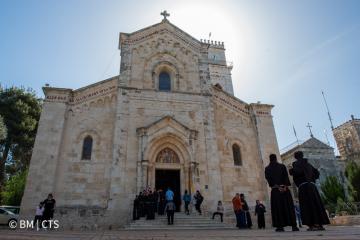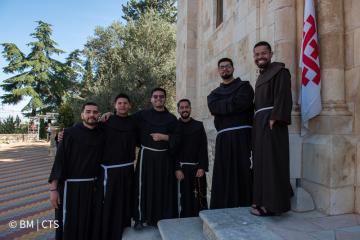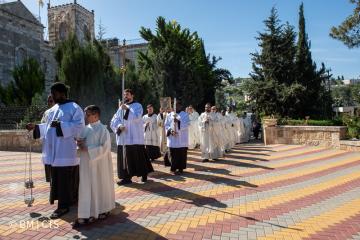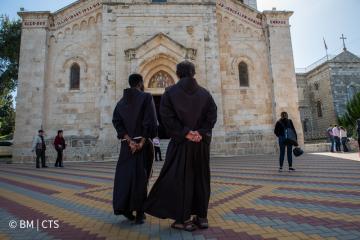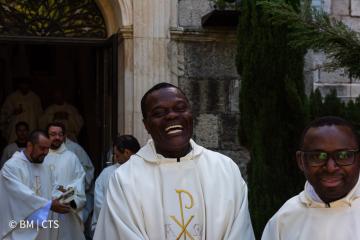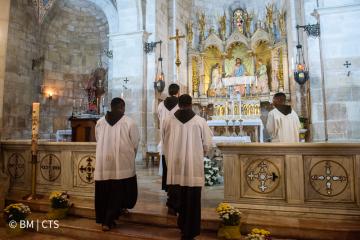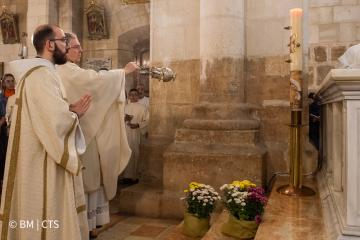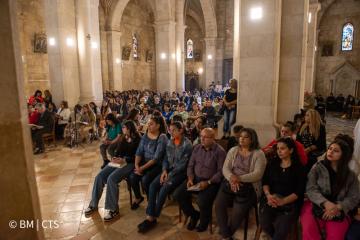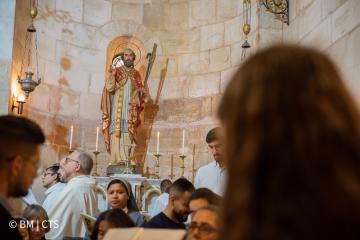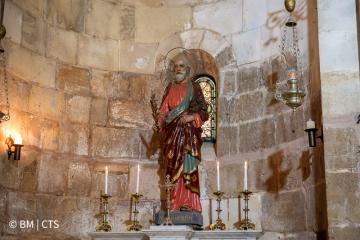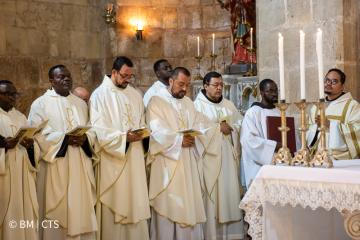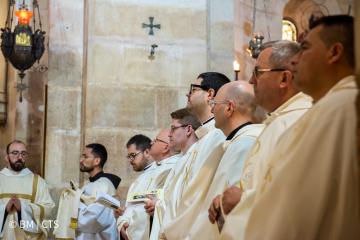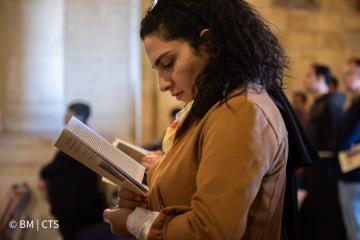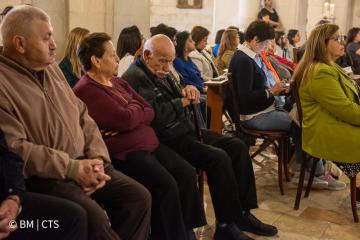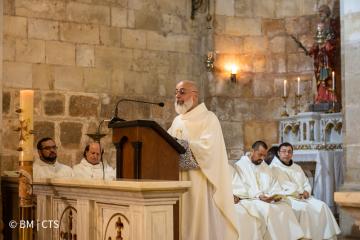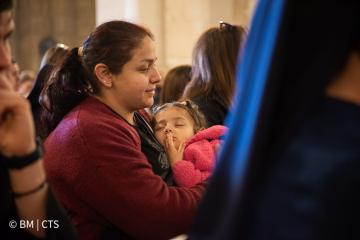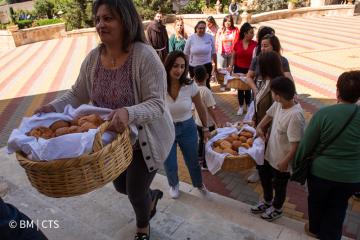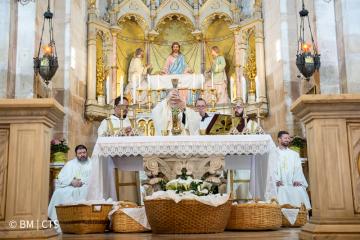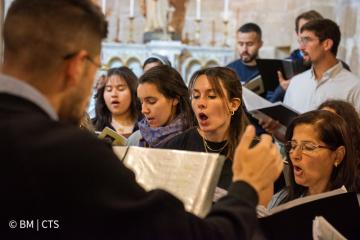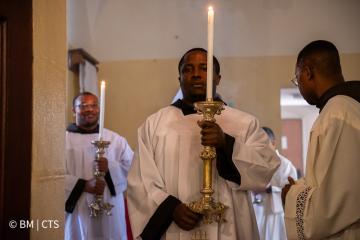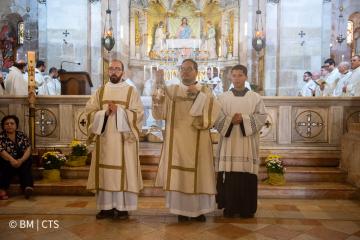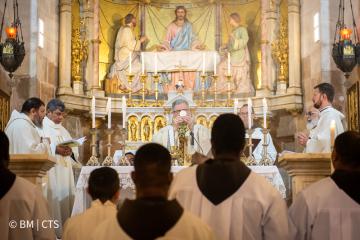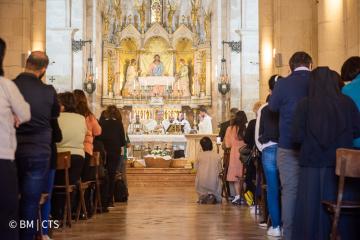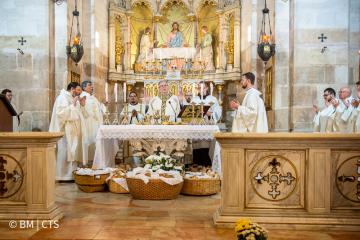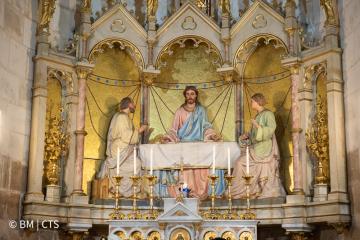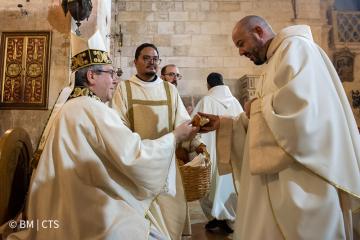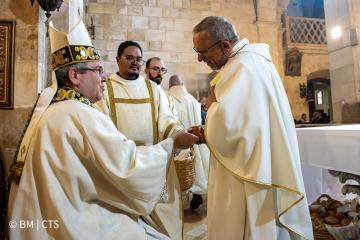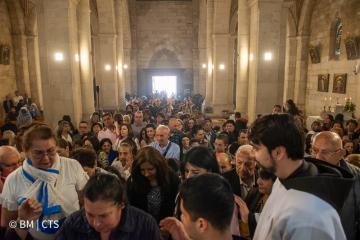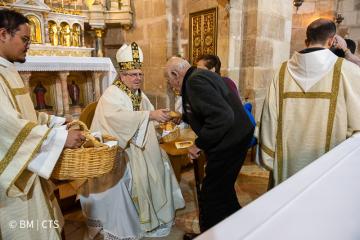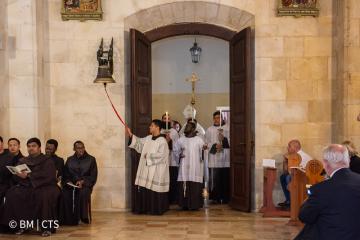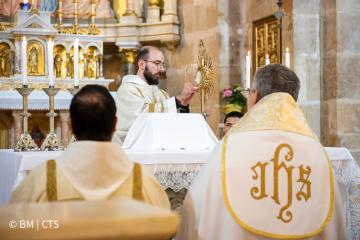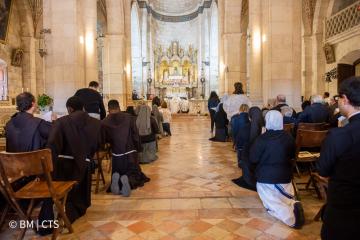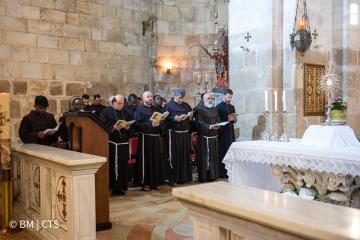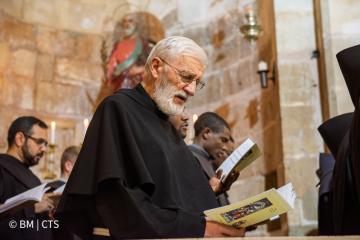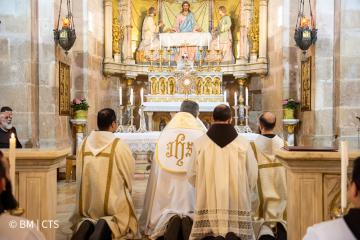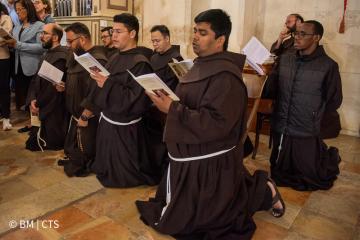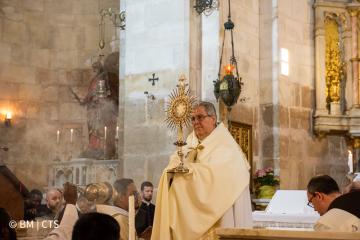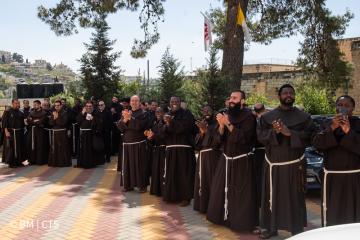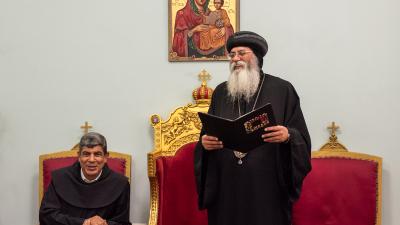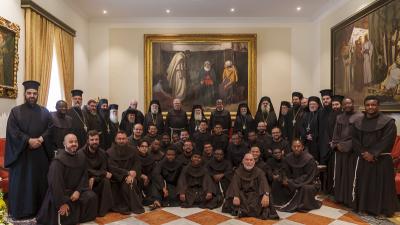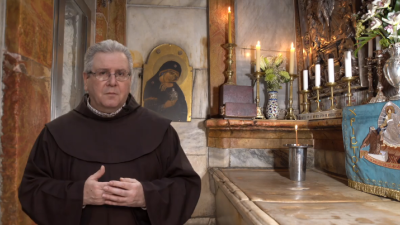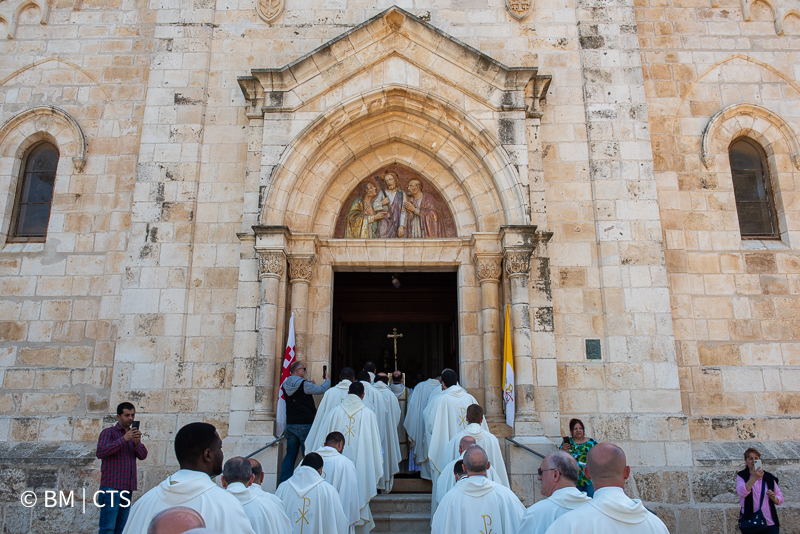
The Franciscans of the Custody of the Holy Land dedicated Easter Monday to the pilgrimage to Emmaus, in the village of El-Qubeibeh, 11 kilometres (about 7 miles) from Jerusalem.
In the shrine dedicated to St Simon and St Cleopas, the Custos of the Holy Land, fr. Francesco Patton, celebrated the Solemn Mass. The Gospel of the day recalls the episode of the two disciples who were returning in sadness to their homes in Emmaus and how Jesus accompanied them and explained the Scriptures to them, until they recognized him when he broke Bread.
According to the Custos, this is “one of the places with the most beautiful symbolism. Like Bethany on the Monday of Holy Week which reminds us of the friendship of Jesus, on Easter Monday this place also recalls this capacity of walking together, as Jesus did with the disciples of Emmaus.”
The house of Cleopas
El-Qubeibeh (in Arabic, “small dome”) stands just outside the wall of separation between Israel and the Palestinian Territories. According to the tradition followed by the Franciscans, this is the village the evangelist Luke speaks of. The land on which the shrine stands was bought in 1861 by the Marchioness and servant of God Paolina de Nicolay and given to the Custody of the Holy Land. Excavations have brought to light the remains of a Crusader basilica, which includes an ancient dwelling, identified as “the house of Cleopas” where Jesus spent time with the two disciples.
A God that walks with us
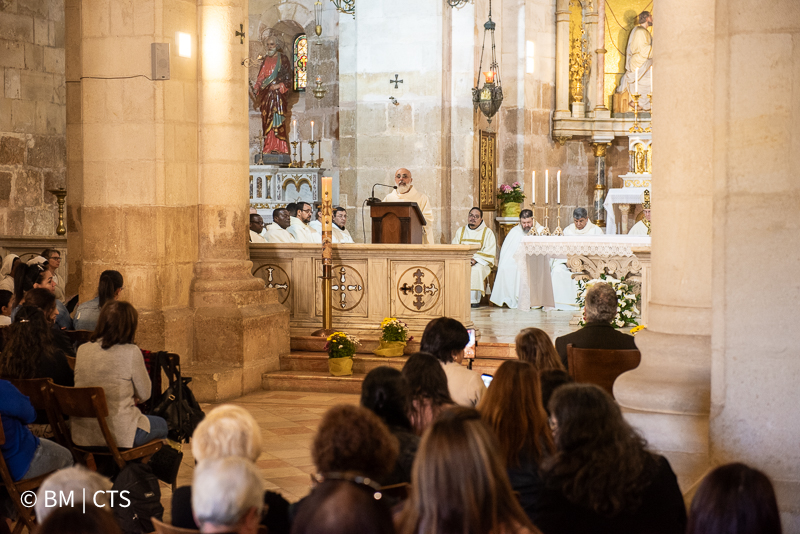
A small crowd of local faithful from Jerusalem and the West Bank and small groups of pilgrims took part in the Mass. The homily was delivered by the guardian of the Franciscan convent of Emmaus, fra Zaher Abboud. “Today we are in a similar context to the one in which the disciples of Emmaus lived: war, deaths, insecurity. In the Gospel, we see that the Lord starts to walk with the disciples and to explain the Scriptures to them. We do not believe in a Christ-magician who solves the situation, but in a God who walks in our lives, in our difficulties and explains our life to us in the light of the Scriptures.” Jesus makes himself known in breaking bread, in the Eucharist. “When we are in difficulty,” fra Zaher said, “we return to the Eucharist and plea as the disciples of Emmaus did: ‘Stay with us.’”
Broken bread
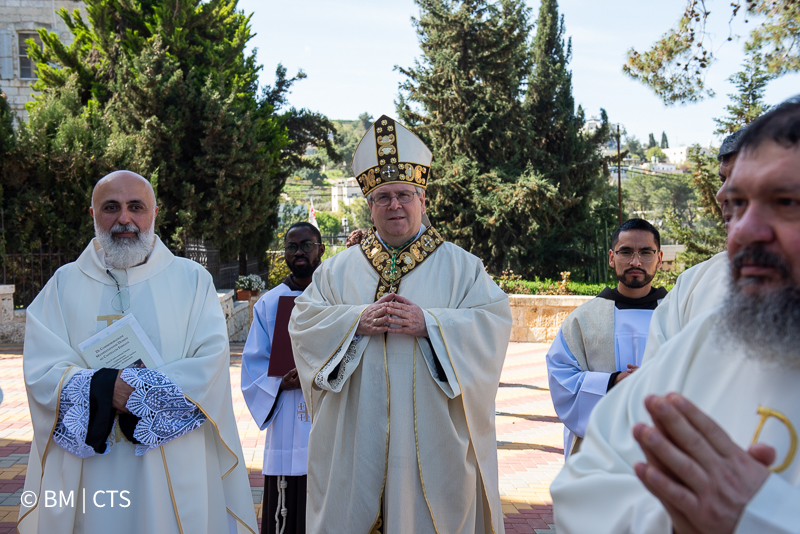
The Custos also reflected on how, at the beginning of the evangelical story, “Jesus makes the most of the inability of the disciples to recognize what has happened. He does not start from a lesson but from listening to their questions, difficulties and the delusions that the disciples have experienced. He then enlightens the situation with the Scriptures and in the end offers them the sign of breaking bread, which allows the disciples to recognize him. We also have to recognize in the first place the elements that create difficulties for us as believers, which shock us - years of conflict and the lack of permanent solutions for peace -, and we have to allow this to be enlightened by the Scriptures. The Lord is present in breaking bread, in the deep capacity to share people’s lives. We also have to share the difficulties of the people who are entrusted to us and of each other, not thinking that there is one suffering that deserves to be understood and one that is not worth it.
Sharing bread
At the end of the Mass, as tradition has it, loaves of bread were blessed and then offered to all those present. “This simple gesture,” the Custos insisted, “shows that bread is something we always receive as a gift - in the Eucharist and in life. It is a symbol of the fact that life is a gift that is continuously offered to us and that we are continuously invited to receive with gratitude.” This gesture also helps us “to have sharing in our perspective of Christian life.”
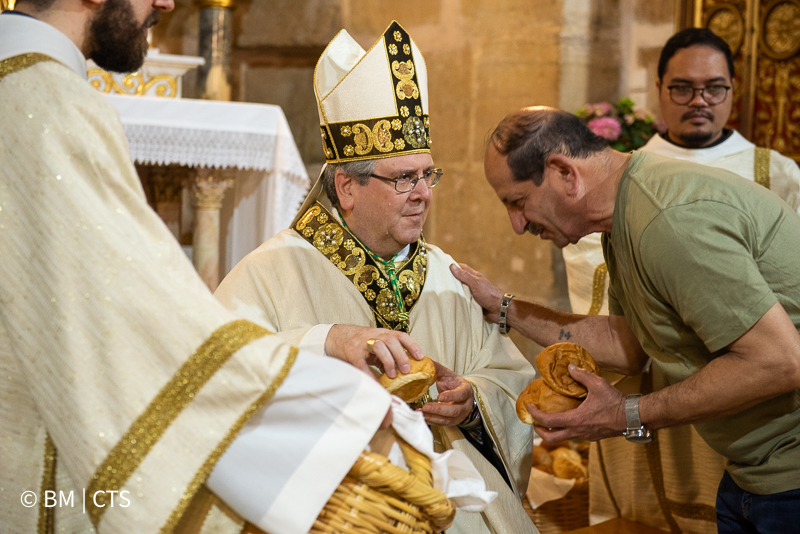
In the light of Easter
“Today we have had a luminous and Easter time,” the Custos of the Holy Land said after Mass. “We have seen faithful from various communities and in celebrating we have felt the presence of the Risen in our midst.” Even in a situation marked by conflict and many difficulties, it is possible to trace the signs of the presence of the Risen. “I am thinking of the small community of Gaza: celebrating Easter and expressing faith in the Risen Lord in a situation where all the surroundings speak only of death is an extraordinary sign of Easter, just like the ability to keep the heart free of hatred and open to reconciliation.”
In the early afternoon, the friars sang the Vespers in the shrine, facing the Most Blessed Sacrament. The Custos then gave the final blessing.
Marinella Bandini


